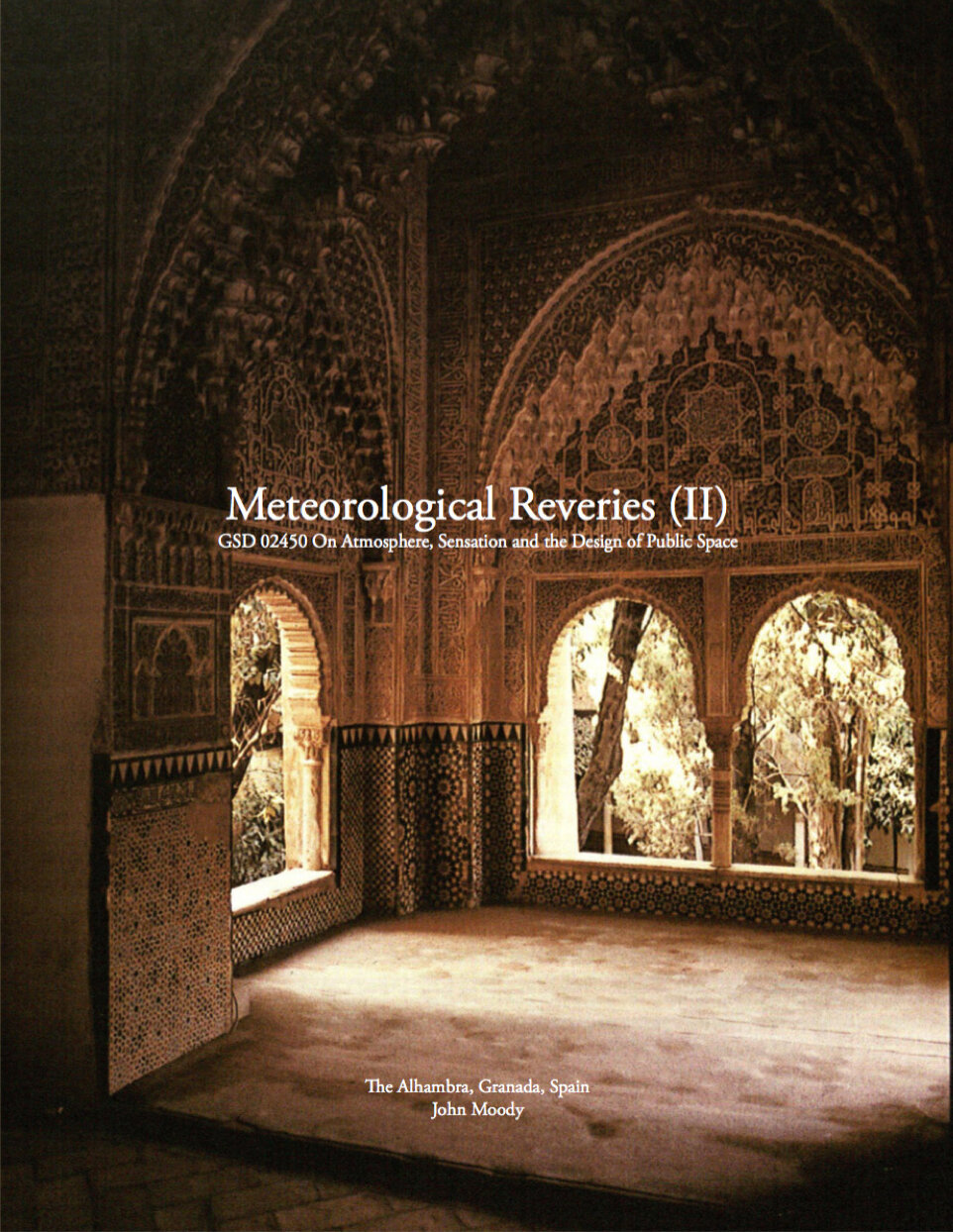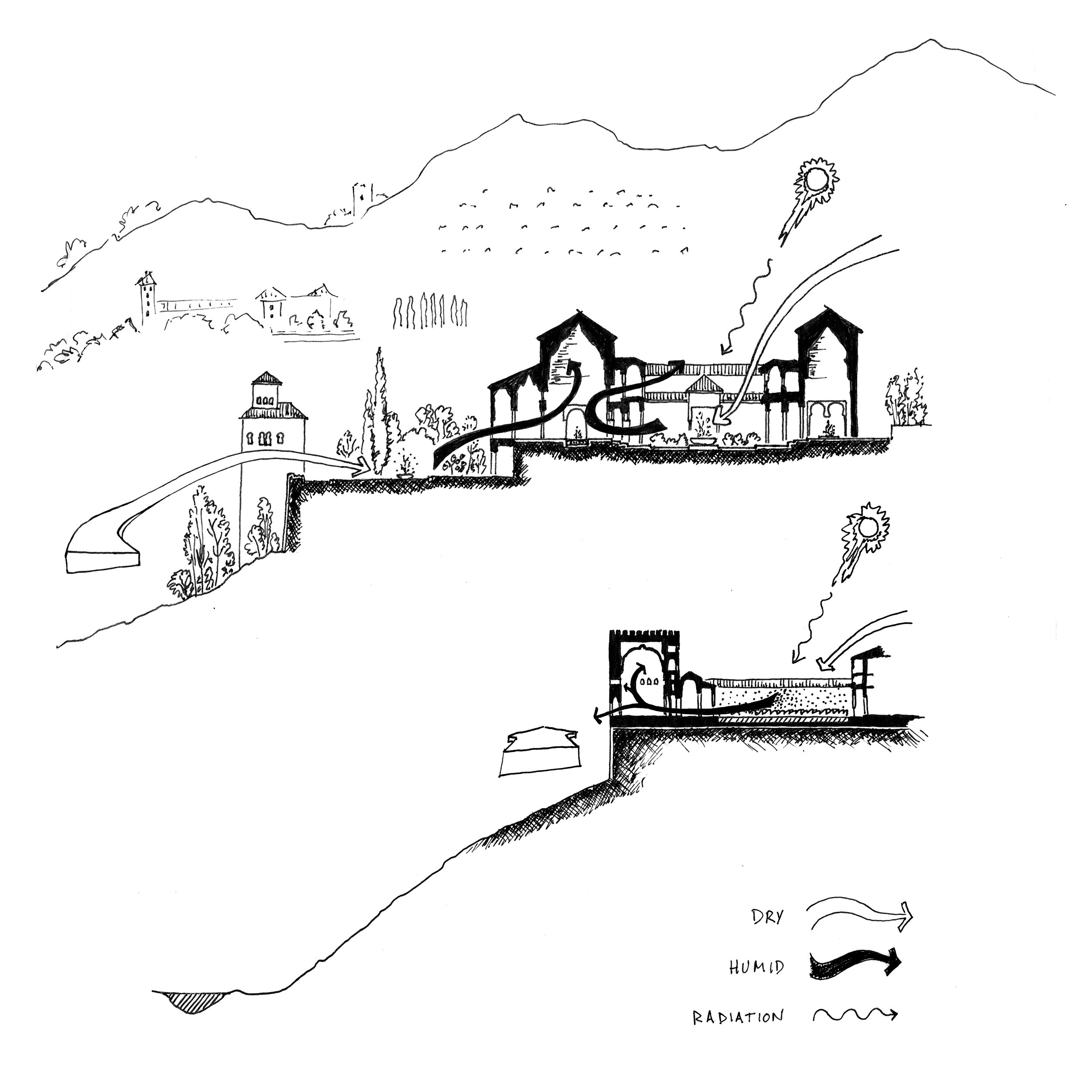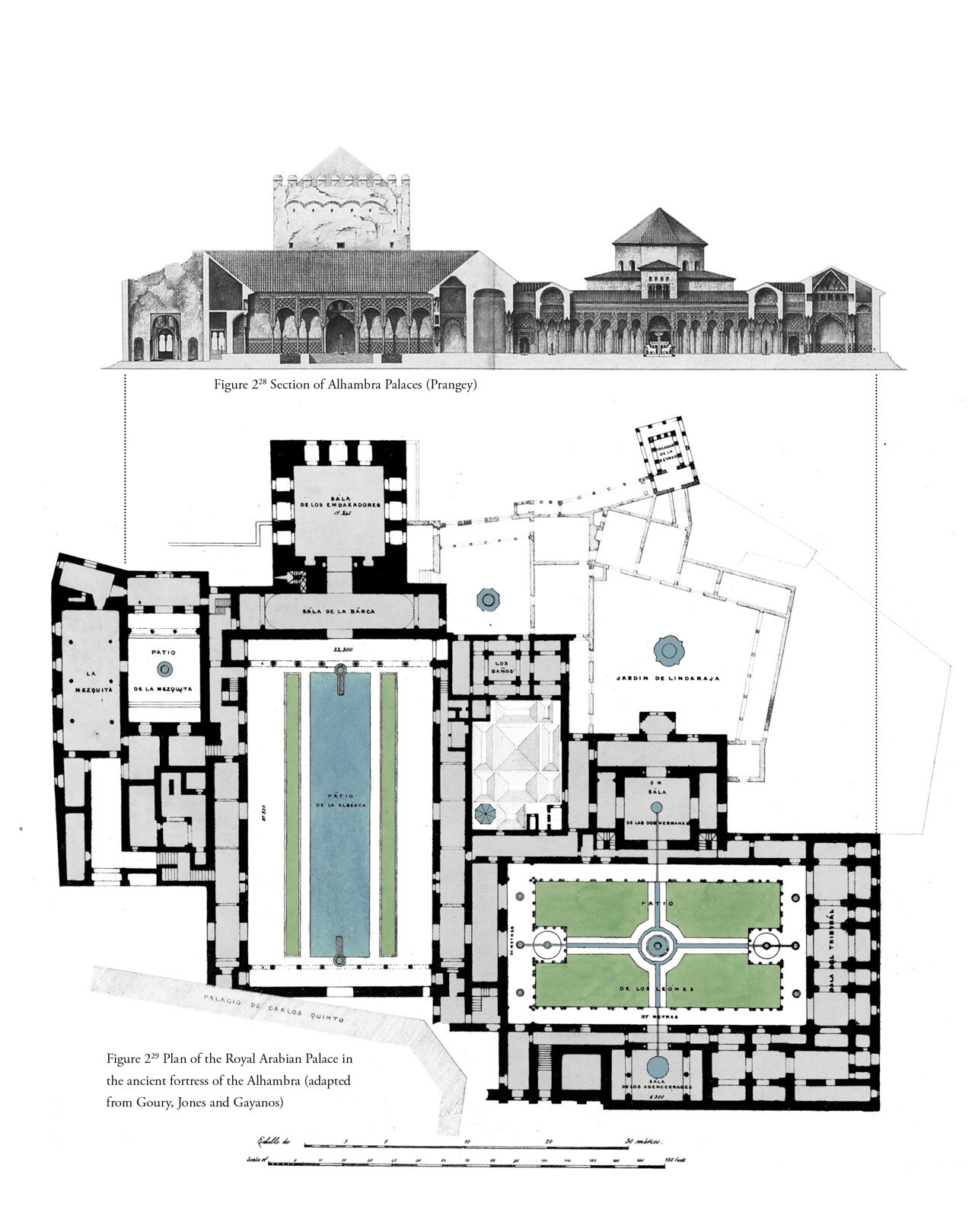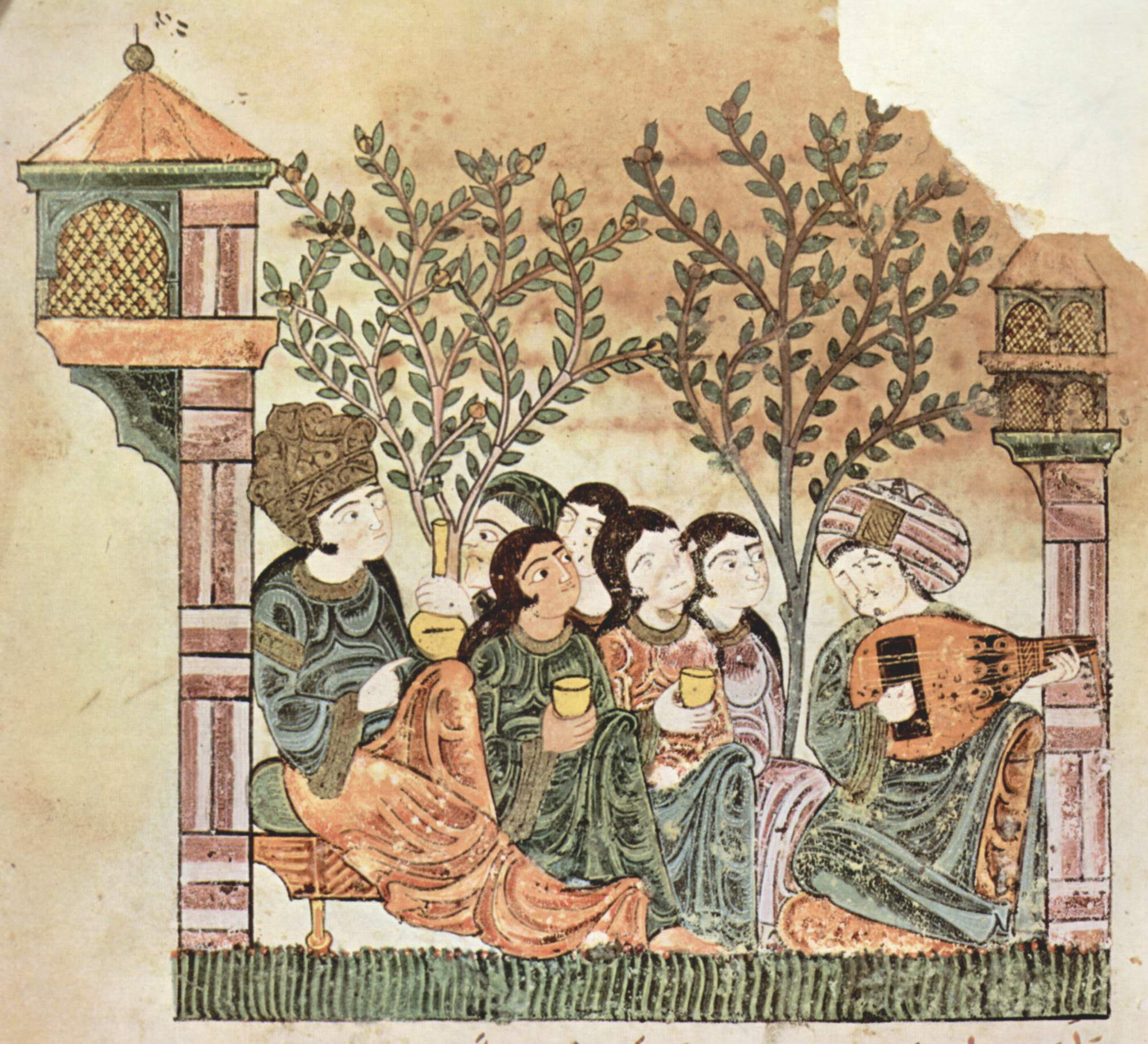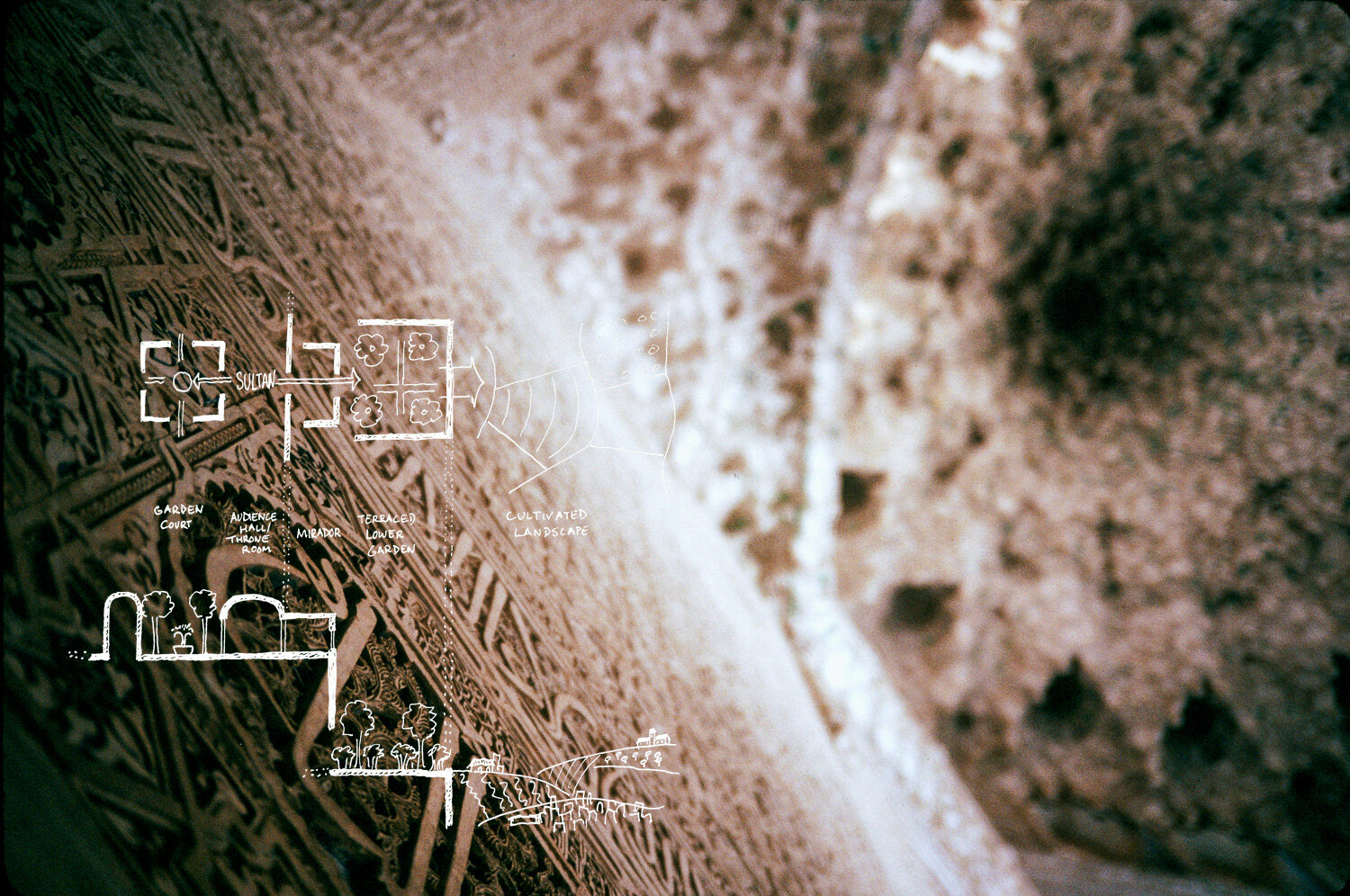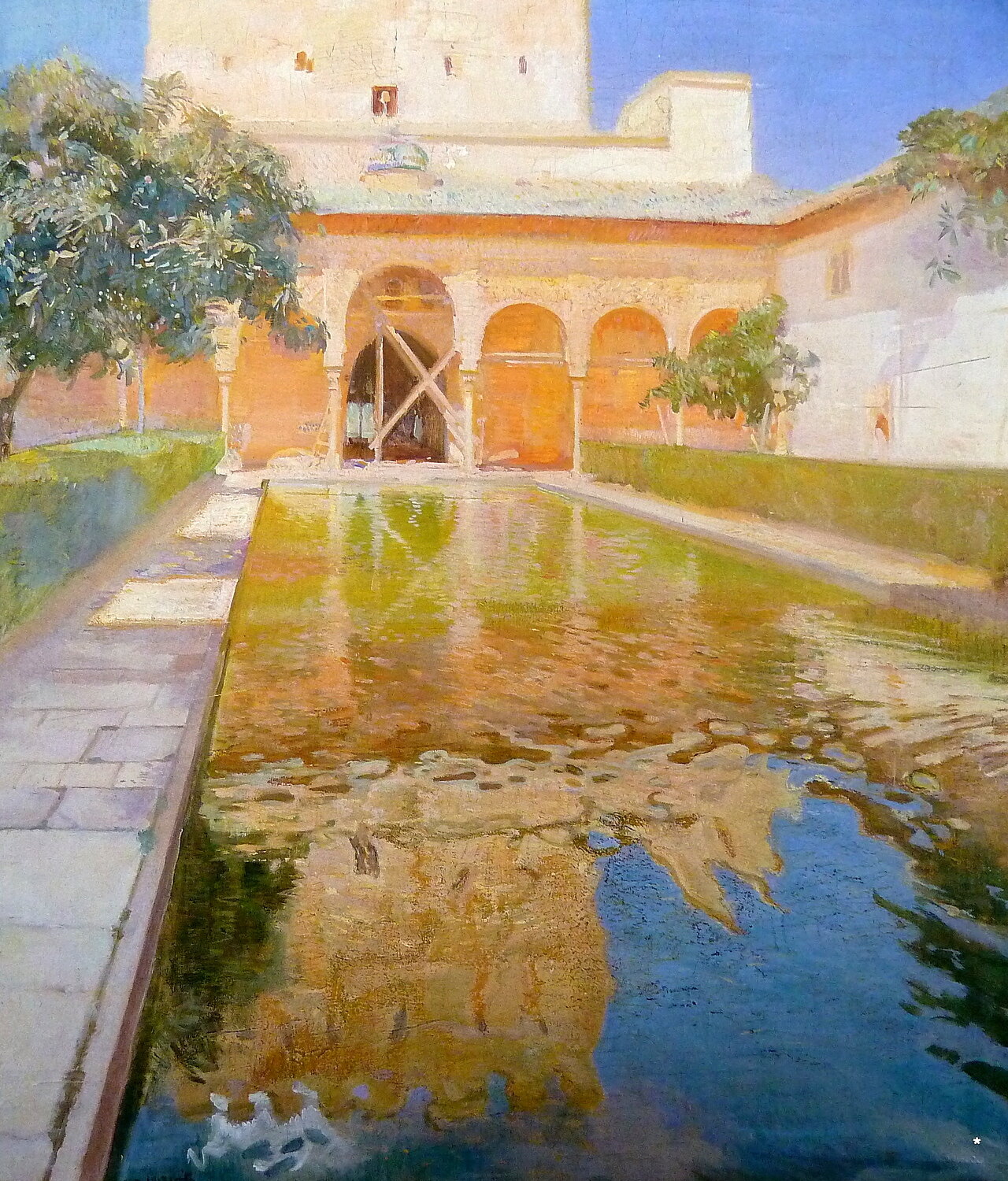How do you design a space not just for physical comfort, but for greater reflection and creativity?
We live within an envelope of air that affects our wellbeing and shapes our perception of the world around us, but we frequently dismiss atmosphere and bodily sensation as considerations in designing our cities and public spaces. For a seminar on atmospheric design at Harvard Graduate School of Design, I investigated the Islamic garden palaces of the Alhambra in Granada, Spain to help advance atmosphere as a concept that can expand the ecological, physiological and humanistic scopes in design.
Having lived in Granada and visited the Alhambra several times, I was really interested in finding ways to connect the lineage of its design language to the unique human experience of the palaces.
In Chapter 1 of my study, I situate the experience of the garden palaces within the longer lineage of cultural expressions used by Islamic political power. In Chapter 2, I peel back its design strategies of shaping territory, water, and space through explorations of unions between historical prototypes, such as between the chahar bagh and the Bedouin campground. In Chapter 3, I investigate the thermodynamic forces at work in both summer cooling and winter warming through simulations using a digital elevation model of the landscape and original design drawings.
In Chapter 4, I conclude by examining how the same surfaces, openings, and water manipulated for thermodynamic comfort in the Alhambra were simultaneously manipulated to inspire abstract reflection and creativity, unlocking a new paradigm for the medieval world in which memory and mediated experiences of the landscape dictated new sense of connection between human beings and their surrounding environment.
Role: Author, Researcher
For: Harvard GSD2450 Meteorological Reveries (II)
Instructor: Silvia Benedito
Date: 2015
Type: research
Sample pages:
Chapters
Chapter 1: Political Climate (PDF 9mb)
While legions of tourists and academics have scaled the walls of the Alhambra over the past two centuries to experience its atmospheric spaces, a less popular activity has been to situate these experiences within the longer lineage of cultural expressions used by Islamic political power…
Chapter 2: Designer’s Claims (PDF 20mb)
The Alhambra and its garden palaces perch over the city of Granada where the vega, Andalusia’s fertile lowland, meets the Sierra Nevada, Spain’s highest mountain range. It sits on the 70-meter tall Sabika…
Chapter 3: Taxonomic Investigations (PDF 13mb)
In the Medieval Islamic world, sophistication and refinement were defined by satisfaction and well-being. The key to unlocking how the Nasrids cultivated this type of atmosphere is the skilled production of a passive climate control system, or comfort zone, designed to help the body achieve thermoregulation…
Chapter 4: Memory & Mediated Experience (PDF 8mb)
Although it is easiest to conceptualize the Alhambra’s microclimates as self-contained, protective bubbles, it is more accurate to think of them as a continuous atmospheric system. Muhammad V and the Nasrid sultans were not only protecting their bodies from the extremes of the outside atmosphere, but they were relating with the environment through sensational atmospheric media…

